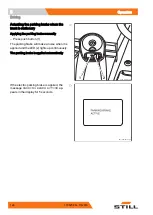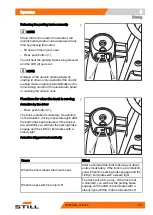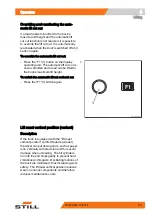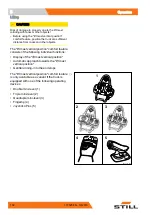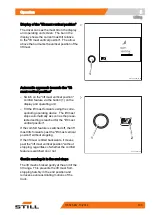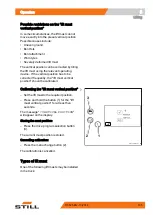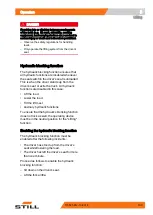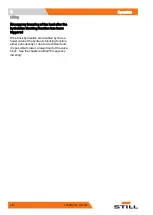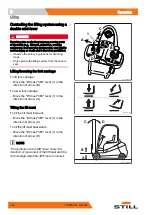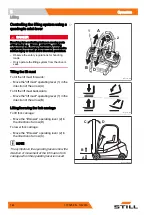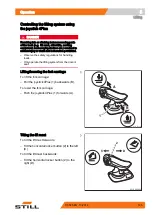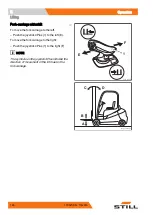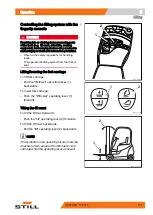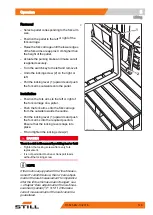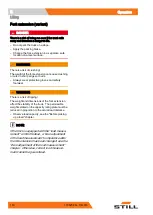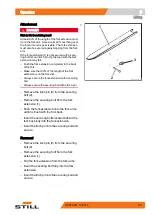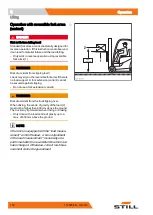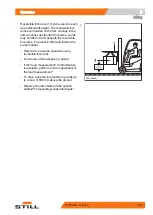
5
Operation
Lifting
Load chains not under tension
DANGER
Danger caused by a falling load!
– Make sure that the chain(s) does (do) not
become slack when lowering the load.
Slack chains can, for instance, result from:
• Resting the fork carriage or the load on the
racking.
• Fork carriage rollers blocking in the lift mast
due to contamination.
– If the fork carriage or the load comes to an
unexpected stop, lift the fork carriage until
the chains are under tension again and
lower the load at another suitable location.
– If the fork carriage rollers in the lift mast
become blocked due to contamination, lift
the fork carriage until the chains are under
tension again. Remove the contamination
before resuming work.
WARNING
Risk of injury!
– Observe the safety regulations for working on
the lift mast, see the chapter entitled "Working at
the front of the truck".
Lifting system operating devices
The operation of the lifting system depends
on the operating devices that are fitted on the
truck.
Possible equipment variants include:
• Multiple-lever
• Double mini-lever
• Triple mini-lever
• Quadruple mini-lever
• Joystick 4Plus
• Fingertip
– The following information must be observed
regardless of the equipment variant:
138
170525 EN - 10/2016
Summary of Contents for RX60-16
Page 2: ......
Page 4: ......
Page 13: ...1 Foreword ...
Page 24: ...1 Foreword Environmental considerations 12 170525 EN 10 2016 ...
Page 25: ...2 Introduction ...
Page 37: ...3 Safety ...
Page 58: ...3 Safety Emissions 46 170525 EN 10 2016 ...
Page 59: ...4 Overviews ...
Page 61: ...Overviews 4 General view of truck 170525 EN 10 2016 49 ...
Page 81: ...5 Operation ...
Page 344: ...5 Operation Cleaning 332 170525 EN 10 2016 ...
Page 345: ...6 Maintenance ...
Page 348: ...6 Maintenance General maintenance information 336 170525 EN 10 2016 ...
Page 352: ...6 Maintenance General maintenance information 340 170525 EN 10 2016 ...
Page 389: ...7 Technical data ...
Page 410: ......
Page 411: ......
Page 412: ...STILL GmbH 170525 EN 10 2016 ...

